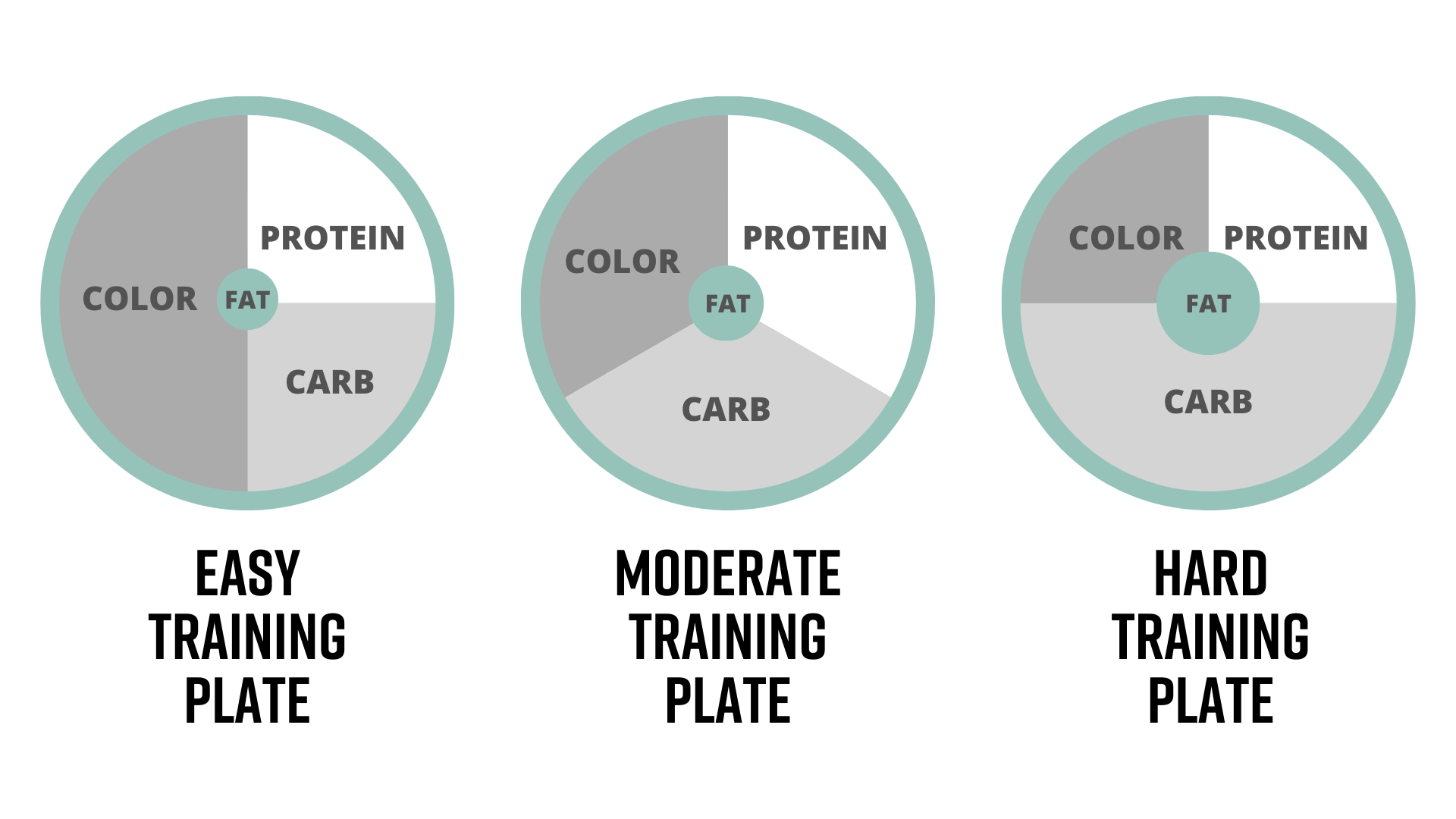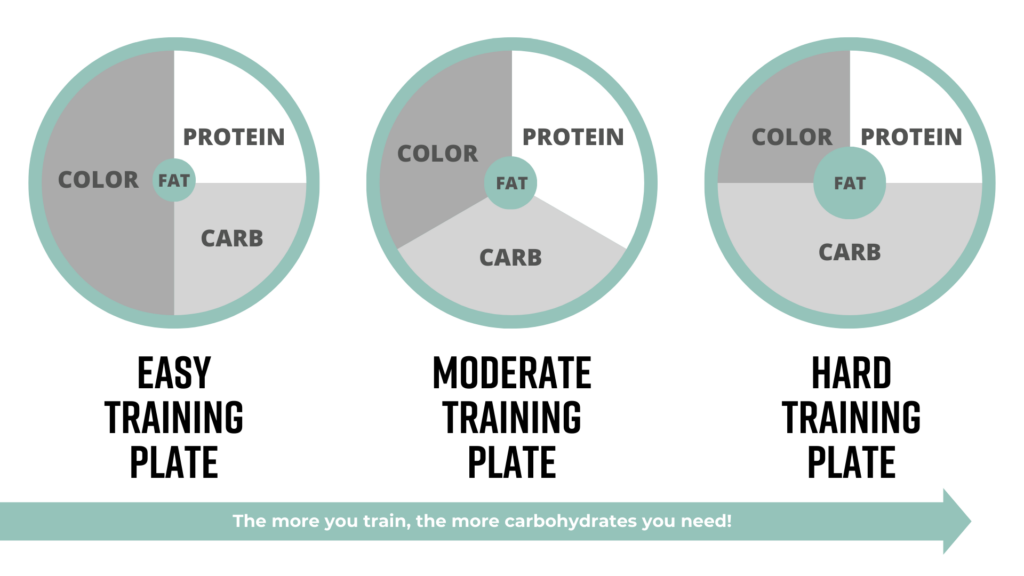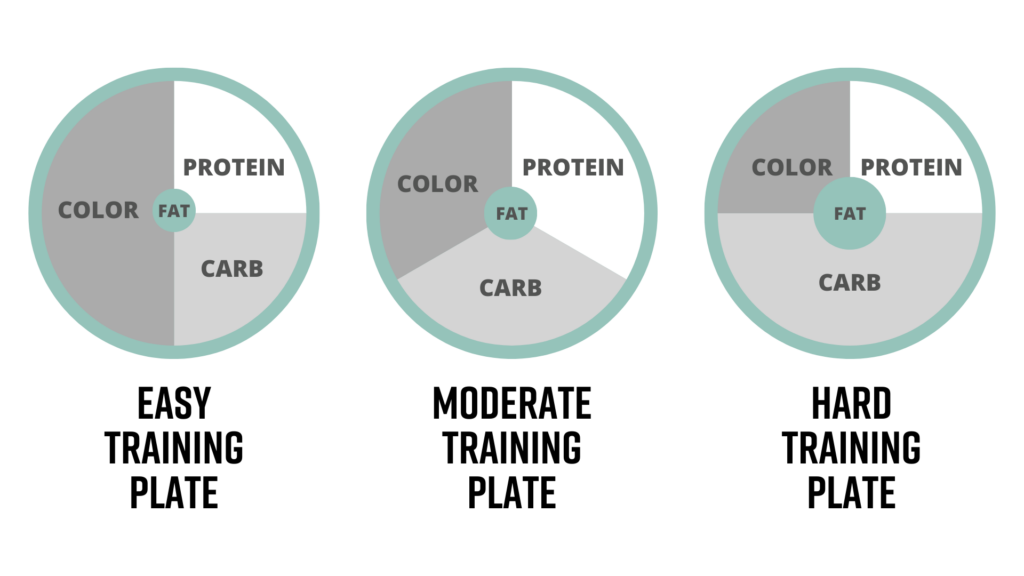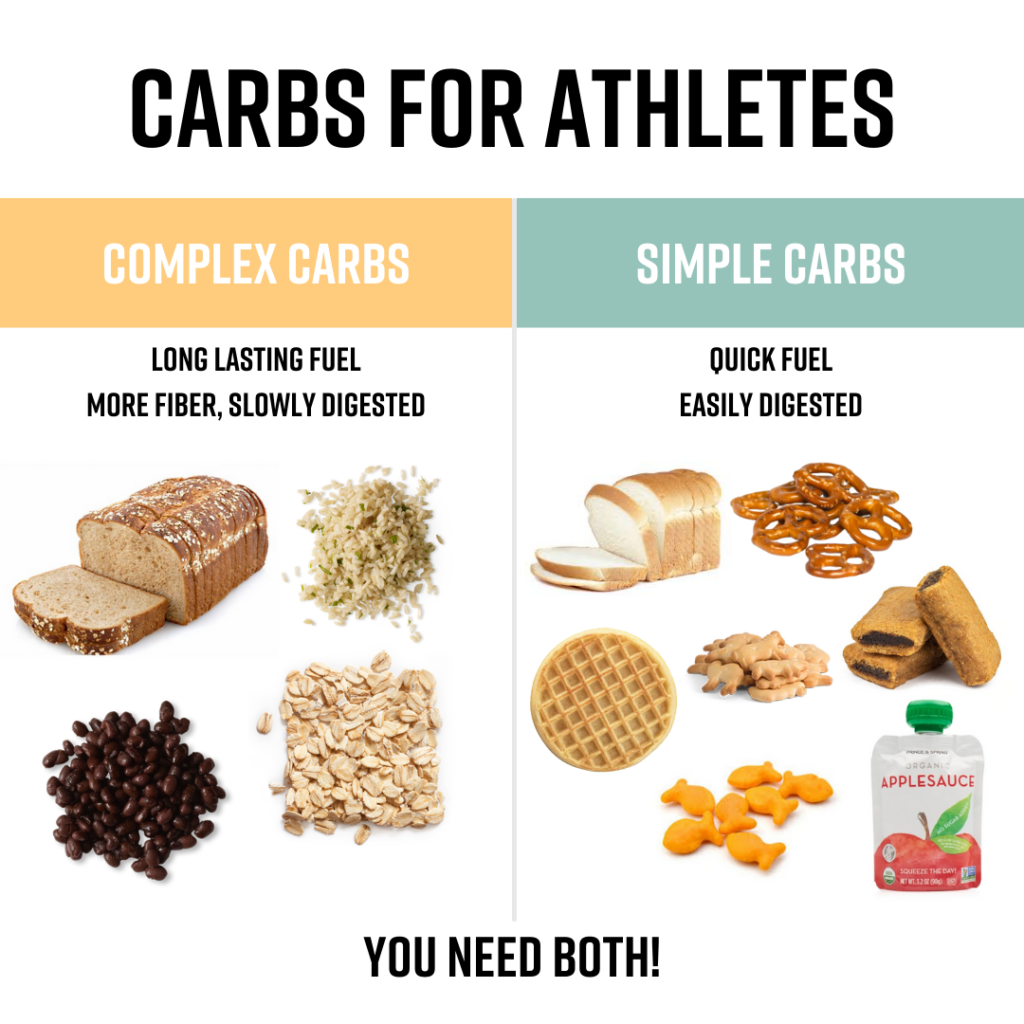This FREE 2026 Level Up Challenge is all about the small, simple changes that have BIG impacts on your performance!
Starting January 4th
Level up your fuel challenge
Learn more
The Blog
Building a Performance Plate for High School Athletes

November 6, 2024
A quick online search for “nutrition for high school athletes” will flood you with recommendations about protein, protein shakes, supplements, and calorie calculators. But then what? It’s easy to get lost in the noise of ‘bro science’ and unverified claims. Instead, it’s time to look past the hype, focus on the research, and apply what really works. Fortunately, the science is clear: athletes need a nutrition plan that’s grounded in the basics: carbohydrates, consistent protein, nutrients from fruits and vegetables, and essential fats. But how can you balance all of these essential components? Enter the Performance Plates.
What are the Performance Plates?
The Performance Plates are a simple tool designed to help athletes fuel their bodies based on their training duration, intensity, and goals. By choosing the right plate and fueling your body properly, you can elevate your performance.
There are three types of Performance Plates, each designed for different levels of training intensity: Easy, Moderate, and Hard.
I highly recommend the Performance Plates for high school athletes. They are easy to follow, simple to adjust, and designed to be flexible as your training and goals evolve.
Fuel: The Foundation of Your Nutrition Strategy
Fuel is the first and most important pillar in your nutrition strategy – it’s what you eat. Before we dive into the details of each Performance Plate, it’s important to understand what should be on your plate.
Carbohydrates:
Carbohydrates are your body’s primary source of energy. They fuel both your muscles and brain, giving you the endurance and focus you need during practices, games, and workouts. Great carbohydrate sources for athletes include:
- Grains (breads, bagels, English muffins, waffles, oats, rice, pasta, and cereal)
- Legumes and beans
- Potatoes and sweet potatoes
Complex carbs, that are high in fiber, are great for meals. They provide slow and consistent energy leading up to practice. Examples include a turkey sandwich on whole wheat bread or a brown rice bowl with vegetables and chicken.
On the other hand, simple carbohydrates, which are low in fiber, are perfect for a quick energy boost right before practice. They are quickly digested and absorbed providing your muscles with quick energy. Good options for snacks before practice are pretzels, crackers, fruit snacks, fruit leather, apple sauce, and animal crackers.
Proteins:
Protein is essential for muscle repair and growth. It’s not about eating massive servings or relying on supplements; it’s about being consistent. Aim for 20 to 30 grams of protein per meal, from a mix of plant and animal sources, and add a small amount of protein to your snacks. Excellent sources of protein for athletes include:
- Chicken, turkey, beef, pork, fish, and eggs,
- Dairy (like yogurt and cheese)
- Plant-based proteins like tofu, legumes, nuts, seeds, and beans
Color:
Fruits and vegetables provide nutrients, vitamins, minerals, and fiber to support everything from muscle recovery and immune health to brain function and overall growth. Aim to include at least one serving of colorful fruits or vegetables with every meal.
Essential Fats:
Fats give your body sustained energy and help you absorb essential nutrients like vitamin D. Incorporate sources like:
- Nuts, seeds, and nut butters
- Avocados
- Olive oil and olives
- Butter and cream cheese
- Whole milk, cheese, and yogurt
Putting It All Together: Building Your Performance Plate
The more you train, the more you need to fuel your body. Longer or more intense training sessions require extra carbohydrates to support your energy needs.
Here’s how to build your Performance Plate depending on your activity level:
- Easy Plate (Rest or Light Activity): ½ color (fruits/vegetables), ¼ carbs, ¼ protein. On lighter training days or rest days, your body benefits from a nutrient boost from fruits and vegetables, which help with recovery.
- Moderate Plate (Moderate Training): ⅓ color, ⅓ carbs, ⅓ protein. On moderate training days, where practice lasts about one to two hours, you need a balance of carbs and protein to keep your energy up and support muscle repair.
- Hard Plate (High-Intensity Training): ¼ color, ½ carbs, ¼ protein. For more intense workouts or longer practices, you need extra carbs to replenish your glycogen stores and fuel your muscles.

Customize for Your Performance Plate
Remember: every athlete is unique. Your specific activity level, sport, preferences, and goals will influence what’s on your Performance Plate. Feel free to adjust the portions and food choices based on what works best for you. Honor your hunger, if you need more fuel… Add it!
Fueling Your Game
As a sports dietitian, my goal is to help you fuel your body in a way that enhances your athletic performance. When you know what to eat and when to eat it, you’ll feel faster, stronger, and more focused. That confidence in fueling your game will help you play at your best.


Be the first to comment